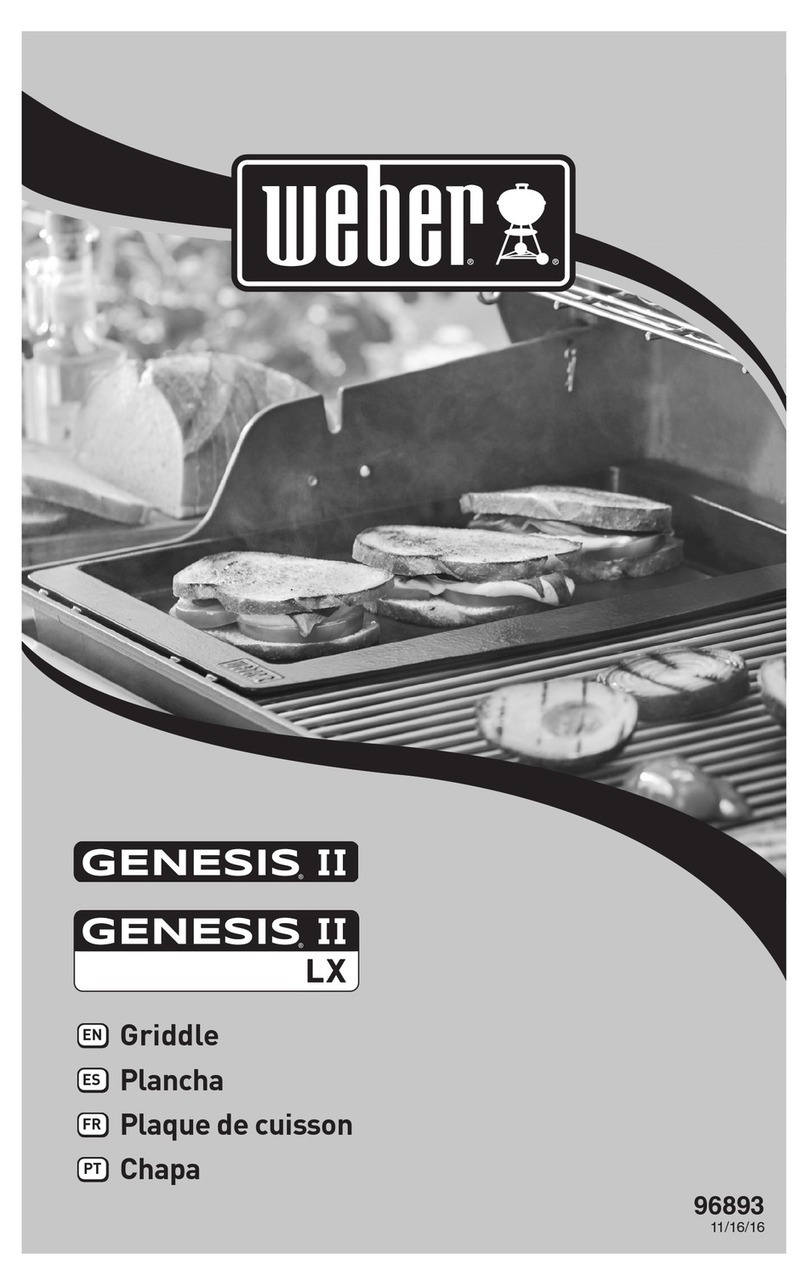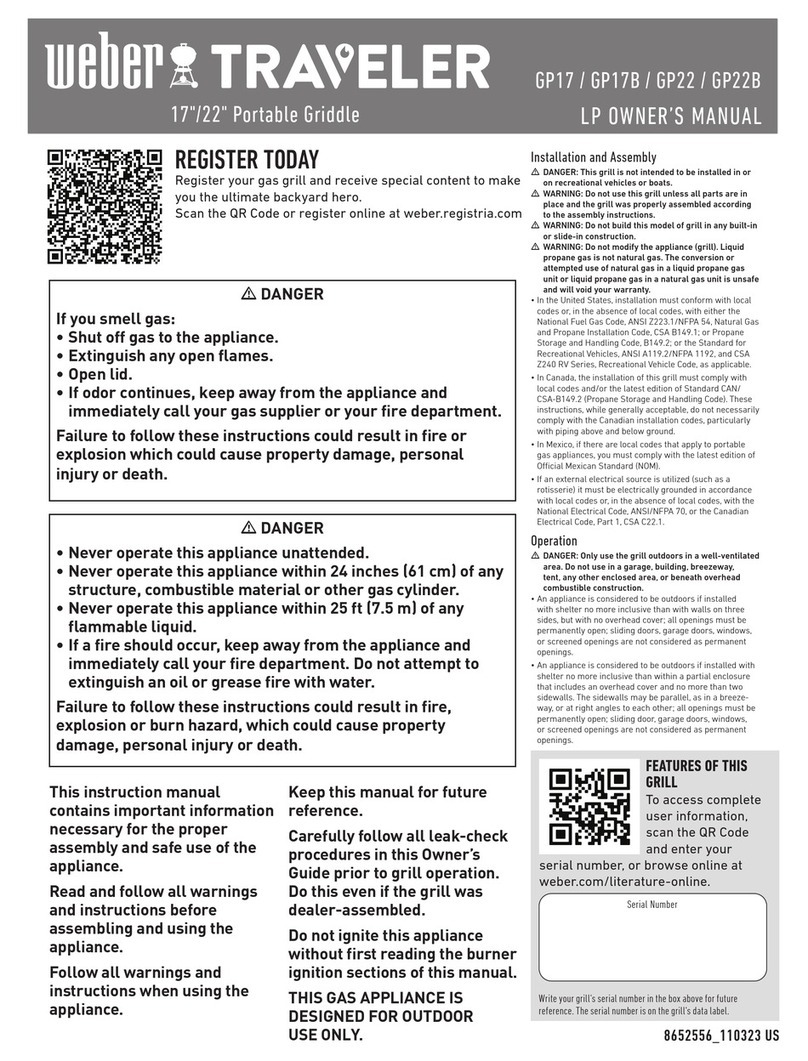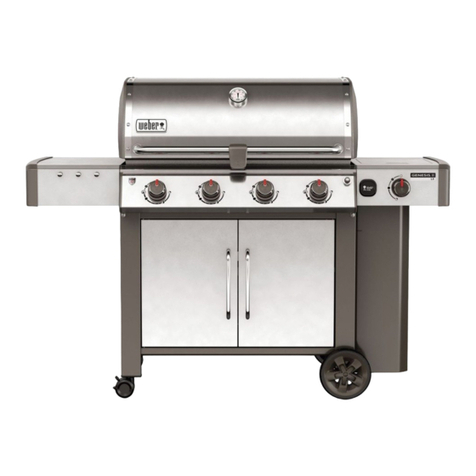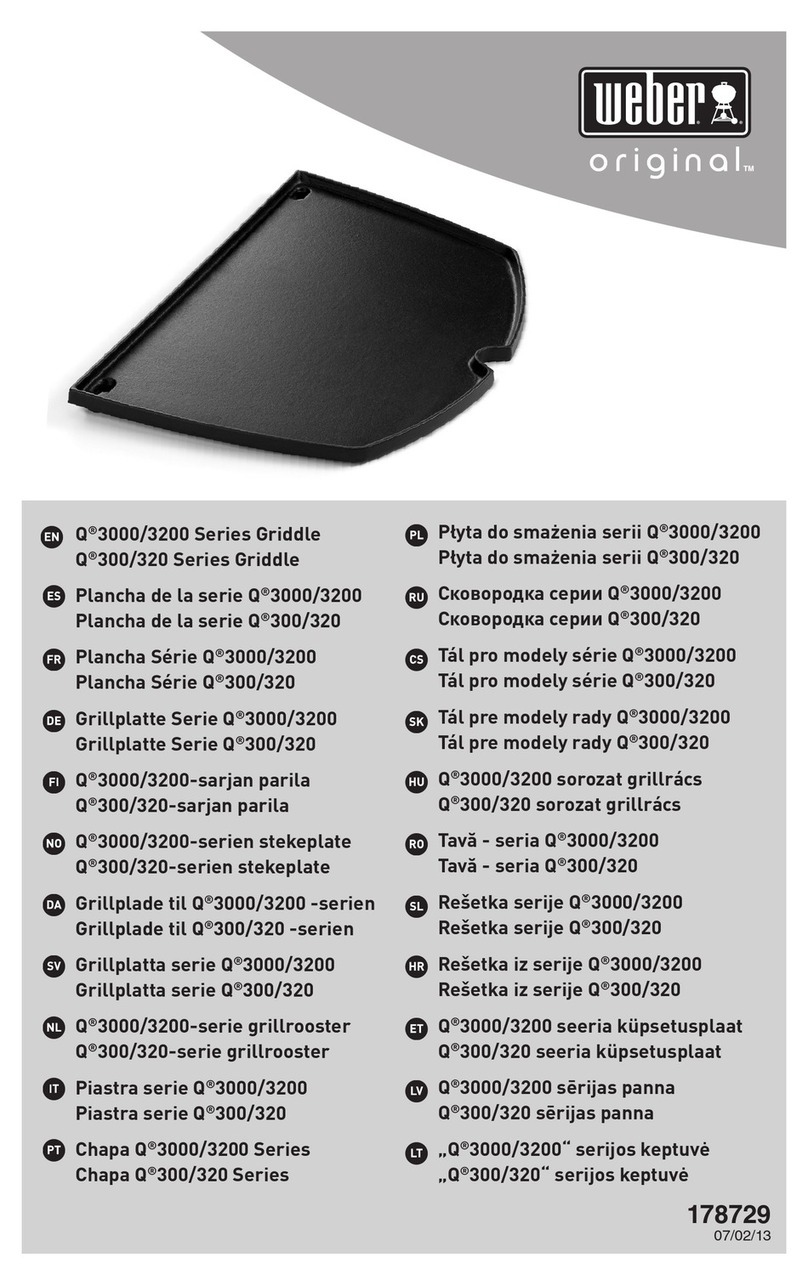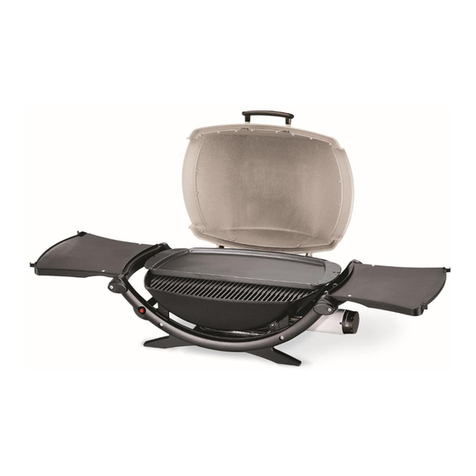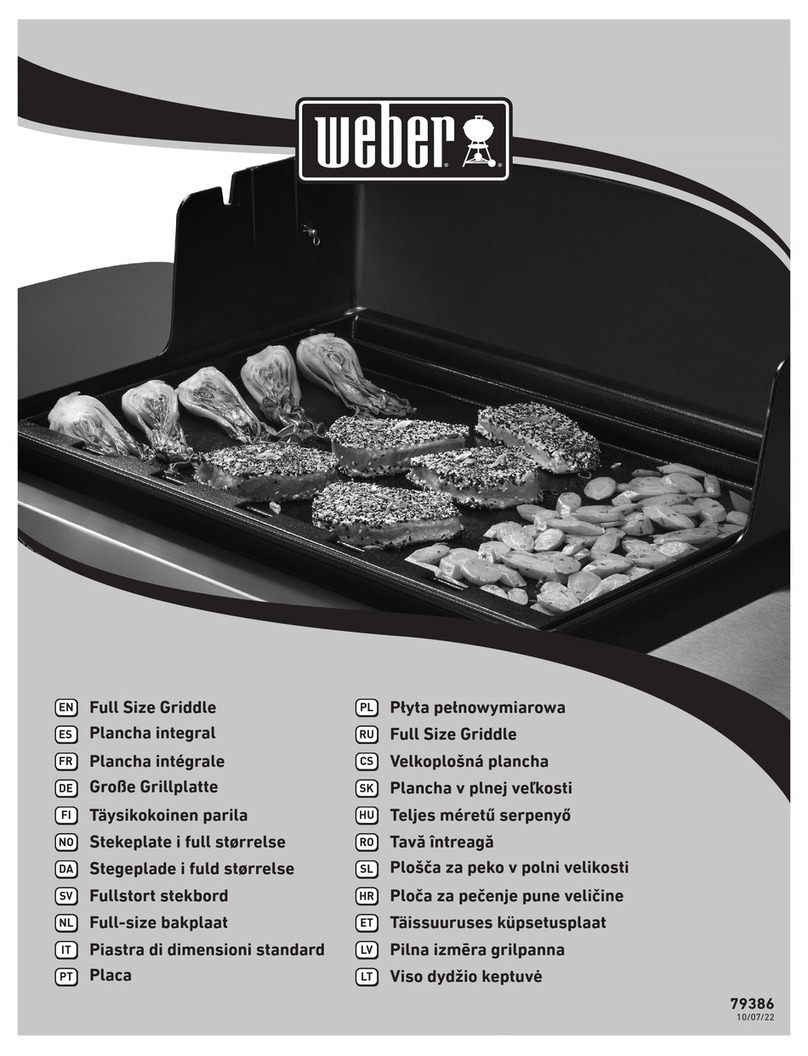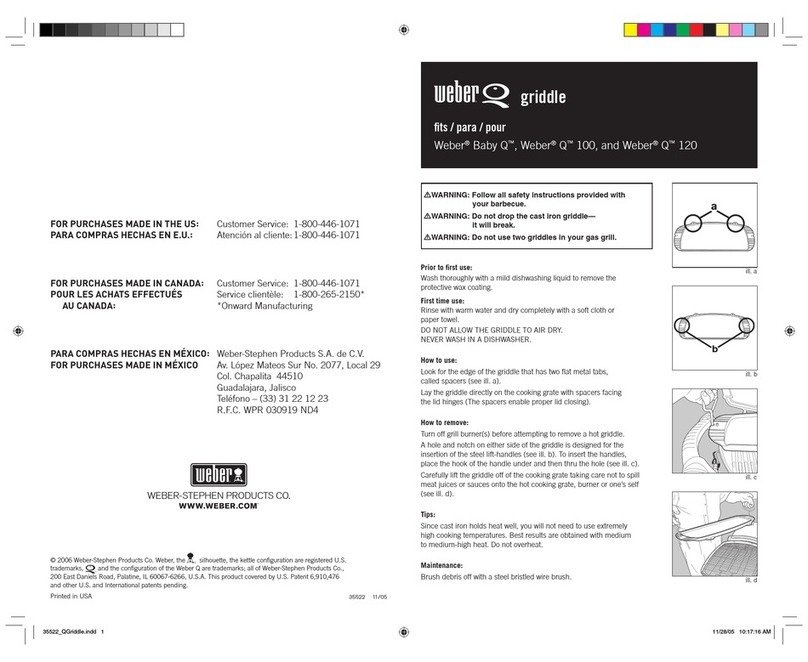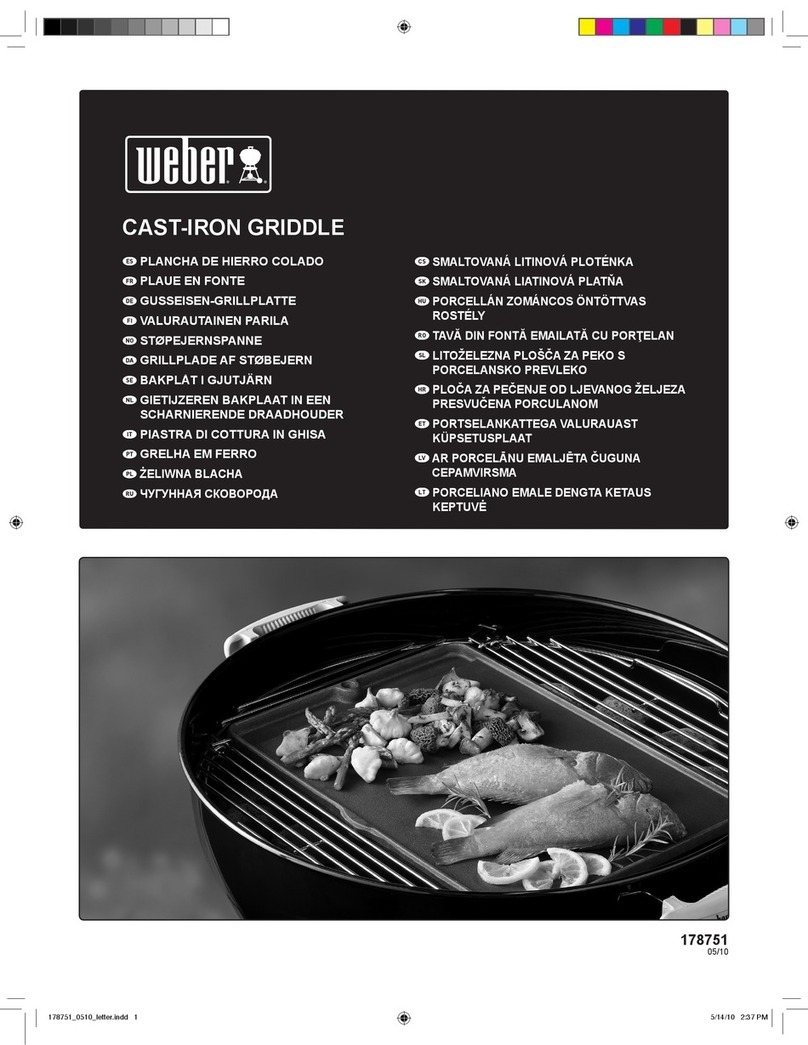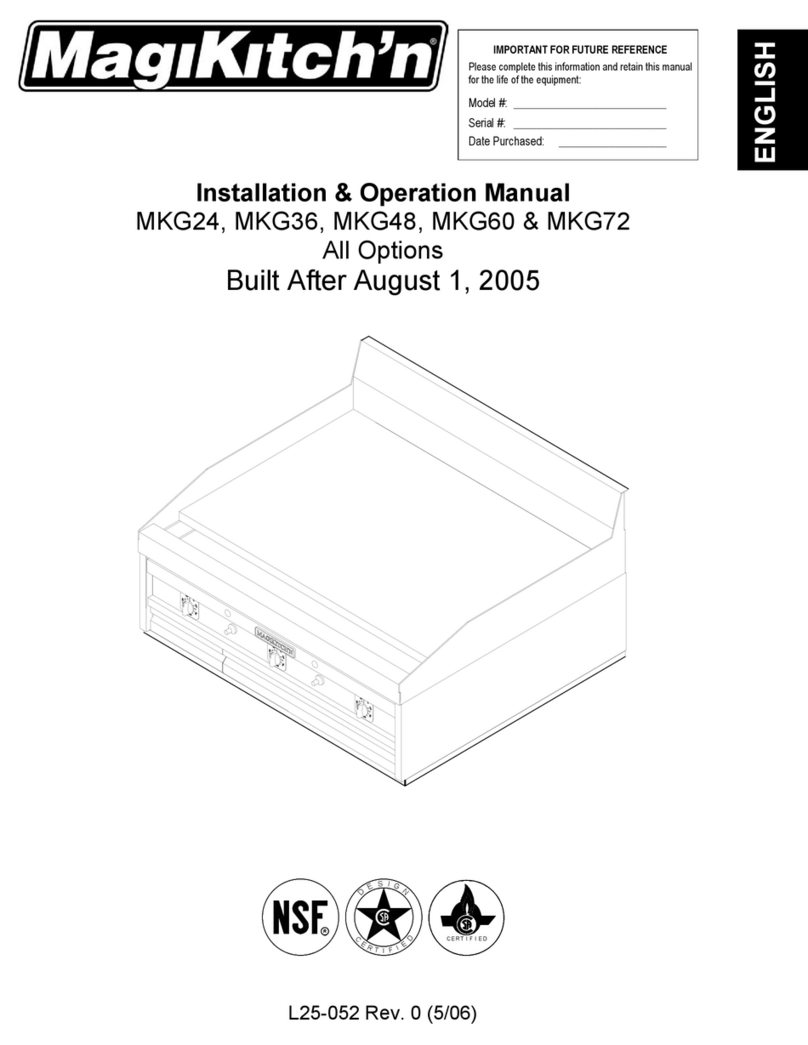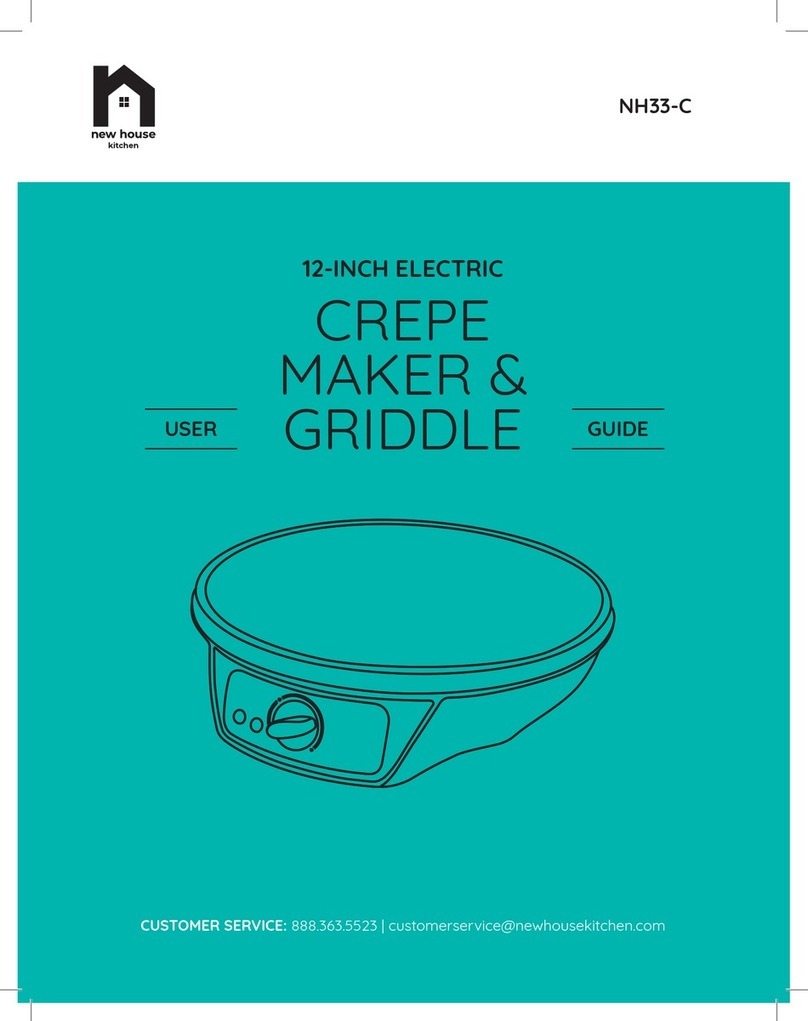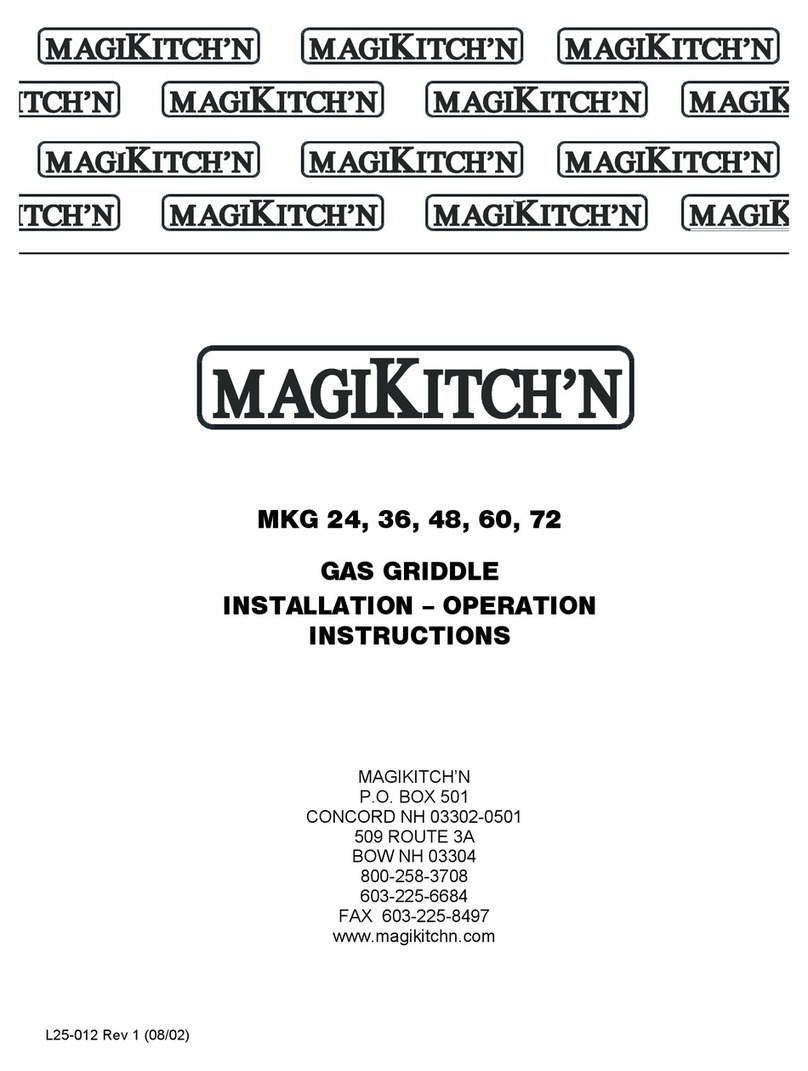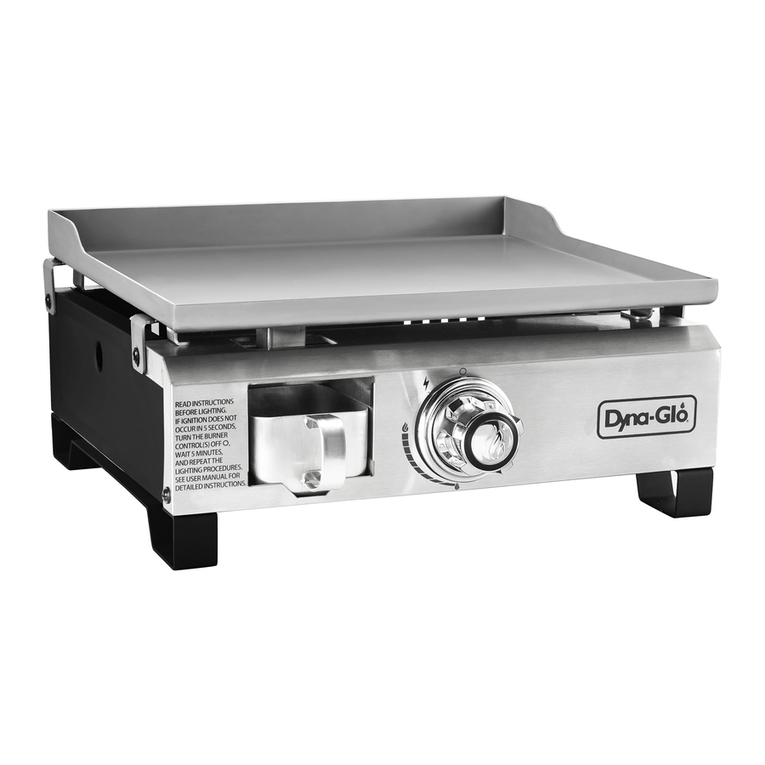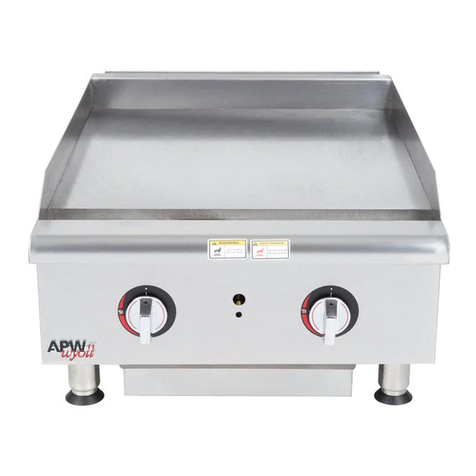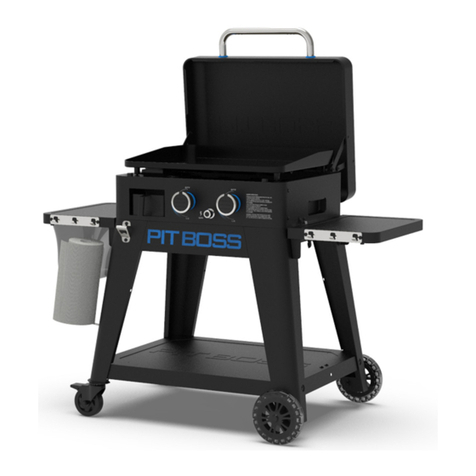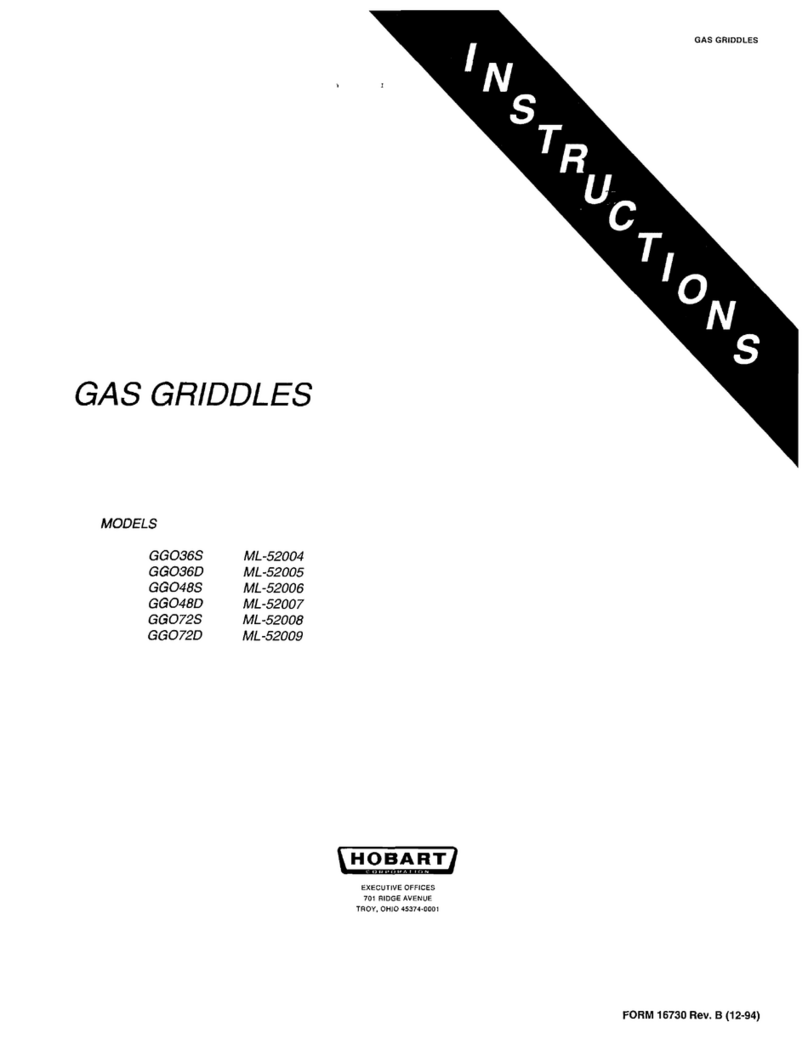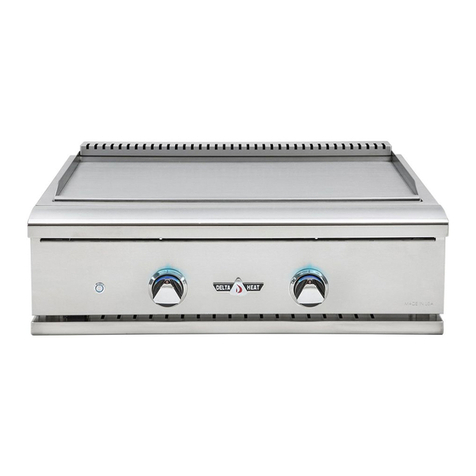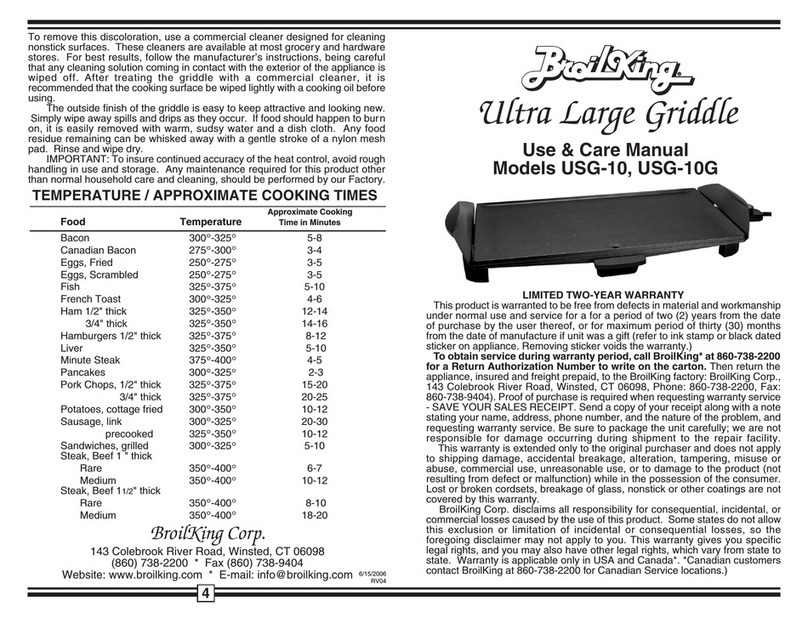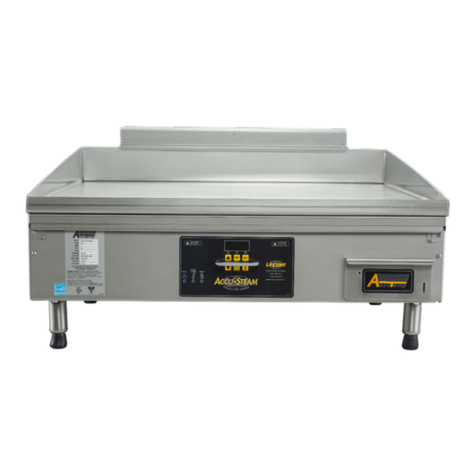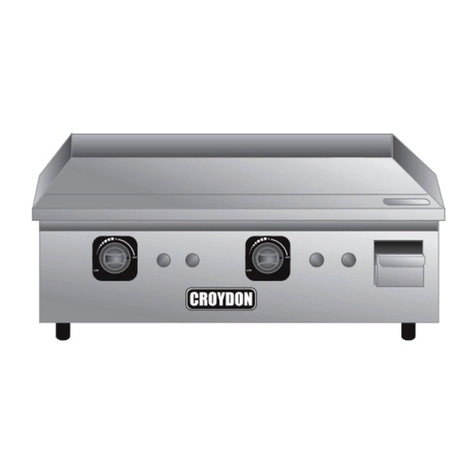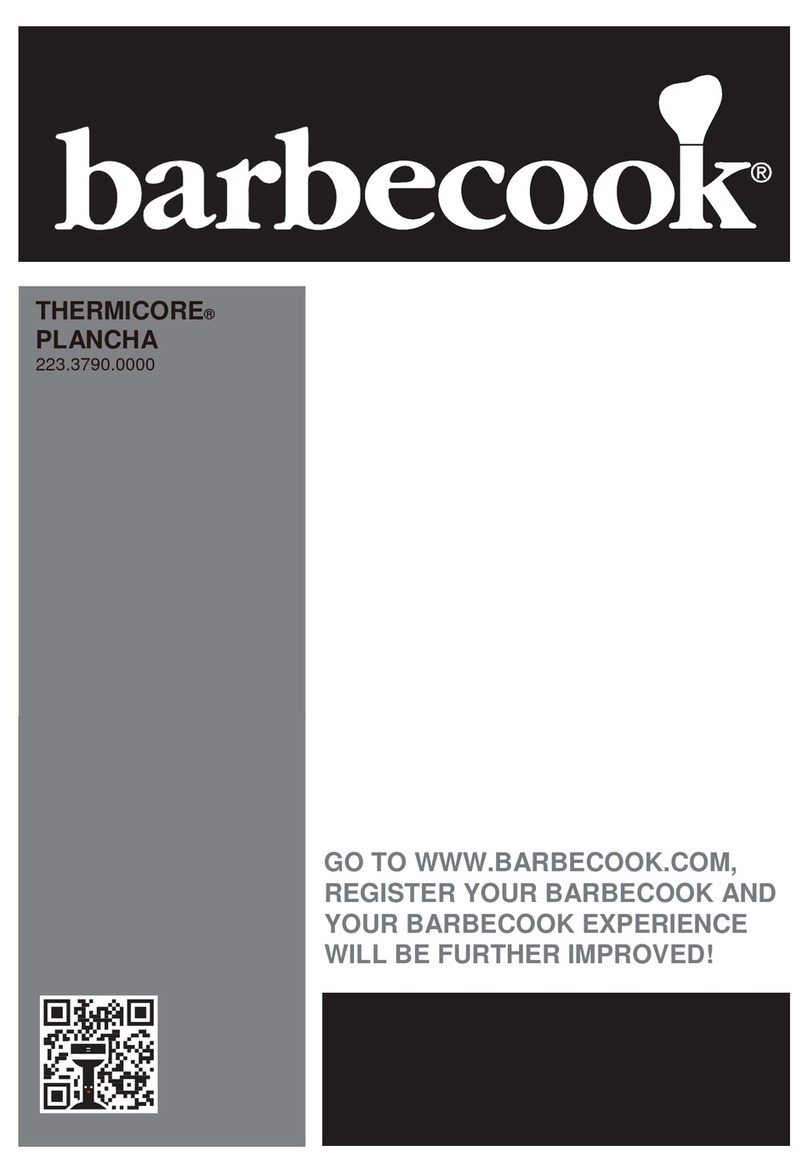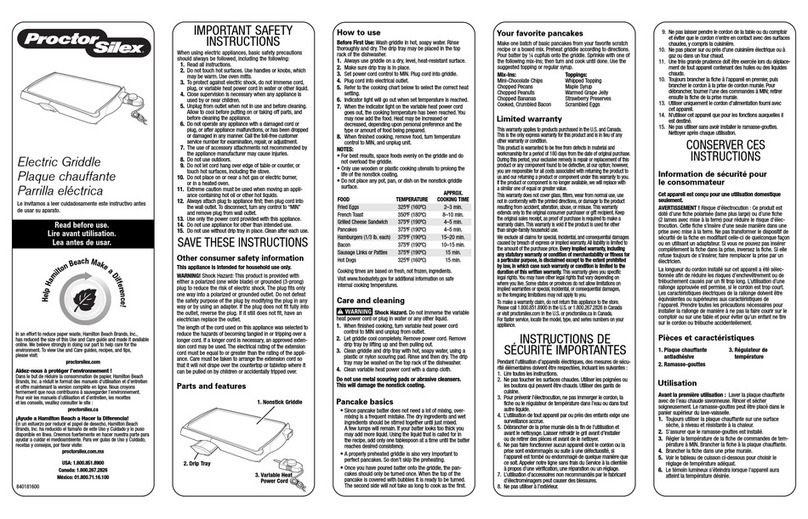
2
Installation and Assembly
mDANGER: This grill is not intended to be installed in
or on recreational vehicles or boats.
mWARNING: Do not use this grill unless all parts
are in place and the grill was properly assembled
according to the assembly instructions.
mWARNING: Do not build this model of grill in any
built-in or slide-in construction.
mWARNING: Do not modify the appliance (grill). Liquid
propane gas is not natural gas. The conversion or
attempted use of natural gas in a liquid propane gas
unit or liquid propane gas in a natural gas unit is
unsafe and will void your warranty.
• In the United States, installation must conform with
local codes or, in the absence of local codes, with
either the National Fuel Gas Code, ANSI Z223.1/
NFPA 54, Natural Gas and Propane Installation Code,
CSA B149.1; or Propane Storage and Handling Code,
B149.2; or the Standard for Recreational Vehicles,
ANSI A119.2/NFPA 1192, and CSA Z240 RV Series,
Recreational Vehicle Code, as applicable.
• InCanada, the installation of this grill must comply
with local codes and/or the latest edition of Standard
CAN/CSA-B149.2 (Propane Storage and Handling
Code). These instructions, while generally acceptable,
do not necessarily comply with the Canadian
installation codes, particularly with piping above and
below ground.
• In Mexico, if there are local codes that apply to
portable gas appliances, you must comply with the
latest edition of Ocial Mexican Standard (NOM).
• If an external electrical source is utilized (such as
a rotisserie) it must be electrically grounded in
accordance with local codes or, in the absence of local
codes, with the National Electrical Code, ANSI/NFPA
70, or the Canadian Electrical Code, Part 1, CSA C22.1.
Operation
mDANGER: Only use the grill outdoors in a well-
ventilated area. Do not use in a garage, building,
breezeway, tent, any other enclosed area, or
beneath overhead combustibleconstruction.
mDANGER: Do not use the grill in any vehicle or in any
storage or cargo area of any vehicle. This includes,
but is not limited to, cars, trucks, station wagons,
mini-vans, sport utility vehicles, recreational
vehicles, andboats.
mDANGER: Do not use the grill within 24 inches (61
cm) of combustible materials. This includes the top,
bottom, back and sides of the grill.
mDANGER: Keep the cooking area clear of flammable
vapors and liquids such as gasoline, alcohol, etc.,
and combustible materials.
mDANGER: This appliance (grill) must be kept away
from flammable materials during use.
mDANGER: Do not put a grill cover or anything
flammable on, or in the storage area under the grill
while it is in operation or is hot.
mDANGER: Should a grease fire occur, turn o all
burners and leave lid closed until fire is out.
mWARNING: Accessible parts may be very hot.
Keepyoung children away.
mWARNING: The use of alcohol, prescription drugs,
non-prescription drugs, or illegal drugs may impair
the consumer’s ability to properly and safely
assemble, move, store, or operate thegrill.
mWARNING: Never leave the grill unattended during
pre-heating or use. Exercise caution when using
this grill. The entire cookbox gets hot when in use.
mWARNING: Do not move the appliance (grill)
duringuse.
mWARNING: Keep any electrical supply cord and the
fuel supply hose away from any heated surfaces.
mCAUTION: This product has been safety-tested and
is only certified for use in a specific country. Refer
to country designation located on outside of box.
• Do not use charcoal or lava rock in the grill.
Storage and/or Non-Use
mWARNING: Turn o the gas supply at the gas
cylinder (tank) after use.
mWARNING: LP tanks must be stored outdoors out of
the reach of children and must not be stored in a
building, garage, or any other enclosed space.
mWARNING: After a period of storage and/or nonuse,
the grill should be checked for gas leaks and burner
obstructions before use.
mStorage of the grill indoors is permissible only if the
LP tank is disconnected and removed from the grill.
California Proposition 65
mWARNING: Combustion byproducts produced when
using this product contain chemicals known to the
state of California to cause cancer, birth defects, or
other reproductive harm.
mPROPOSITION 65 WARNING: Handling the brass
material on this product exposes you to lead, a
chemical known to the state of California to cause
cancer, birth defects, or other reproductive harm.
Wash hands after handling this product.
mDANGER
If you smell gas:
• Shut o gas to the appliance
(grill).
• Extinguish any open flame.
• Open lid.
• If odor continues, keep away
from the appliance (grill)
and immediately call your
gas supplier or your fire
department.
mWARNING
• Do not store or use gasoline
or other flammable liquids
or vapors in the vicinity
of this (grill) or any other
appliance.
• An LP cylinder (tank) not
connected for use shall
not be stored in the vicinity
of this (grill) or any other
appliance.
USE OUTDOORS ONLY.
READ THE INSTRUCTIONS BEFORE USING
THE APPLIANCE (GRILL).
NOTICE TO INSTALLER: These instructions
must be left with the consumer.
NOTICE TO CONSUMER: Retain these
instructions for future reference.
Important
SafetyInformation
DANGER, WARNING, and CAUTION
statements are used throughout this
Owner's Manual to emphasize critical and
important information. Read and follow
these statements to help ensure safety and
prevent property damage. Thestatements
are defined below.
mDANGER: Indicates a hazardous
situation which, if not avoided,
will result in death or seriousinjury.
mWARNING: Indicates a hazardous
situation which, if not avoided,
could result in death or seriousinjury.
mCAUTION: Indicates a hazardous
situation which, if not avoided,
could result in minor or moderateinjury.
Welcome to Weber
